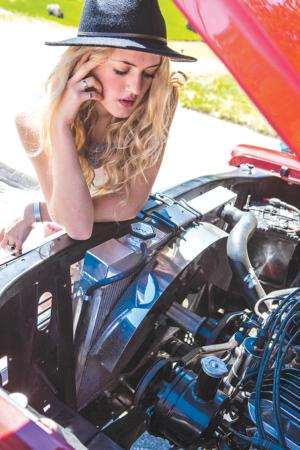Automobiles have come a long way since their introduction more than 100 years ago. Though modern cars and trucks still employ some of the same principles as their forebears, the vehicles people drive today bear little resemblance to those that made waves in the early part of the twentieth century.
Modern automobiles are technological marvels, which has made both driving and maintaining a vehicle much simpler. In regard to maintenance, built-in diagnostic systems can now alert drivers when something is wrong with their vehicles. Though that feature is undeniably useful, drivers can still benefit from learning to recognize issues by ear. Many issues that can affect a car or truck produce unusual sounds, and learning what certain noises may indicate can help drivers detect problems as soon as possible.
Rattling sound in a wheel well: Most people have mistakenly placed clothing in a dryer without realizing they had spare change in their pockets. That mistake is immediately apparent once the dryer starts thanks to the unpleasant noise of coins bouncing off the interior of the machine. Drivers may hear a similar sound when behind the wheel and wonder what’s behind it. Such a sound is often indicative that there’s a loose lug nut inside the hubcap. This issue can arise when drivers don’t tighten the wheel properly after changing their own tire, or if mechanics make the same mistake when rotating or replacing tires during a routine maintenance session.
Squeaking sound: The auto insurance experts at Geico® note that rear-wheel or four-wheel drive vehicles may produce a rhythmic squeaking sound when an issue arises with the universal joint. JD Power notes that the universal joint, often referred to as a U-joint, is part of the system that enables the rotating crankshaft in the engine of a vehicle to transfer that rotating motion to the rear wheels. U-joints get a workout whenever vehicles are driven, so they require maintenance, and a squeaking sound is one indicator that the U-joint needs to be addressed immediately.
Squealing sound: A high-pitched squealing sound is typically indicative of worn out brake pads. However, Cars.com notes that if such a sound is only present when a car is first driven in the morning, it could just be surface rust being scraped off the rotors. After a few initial applications of the brakes, that sound might disappear. If it doesn’t, the vehicle will likely need new brake pads.
Scraping on the windshield during rain: The scraping sound on a windshield when the wipers are in use should not be taken lightly or be interpreted as a sign that the rain is only falling slightly. In fact, that sound indicates the wipers are worn out, which means they’re not effectively clearing the windshield. In addition, the wipers could be scratching the windshield each time they produce this sound, ultimately necessitating a costly windshield replacement. Wiper blades can be replaced in a matter of minutes, so address this issue promptly.
Learning to recognize the culprits behind various vehicle noises can help drivers nip problems in the bud before they compromise the automobile and the safety of the people inside it.




